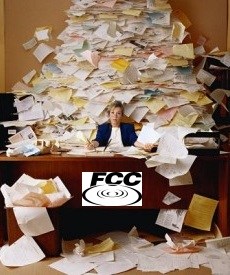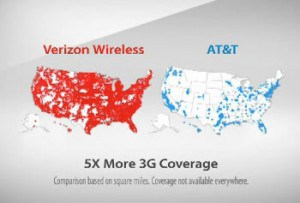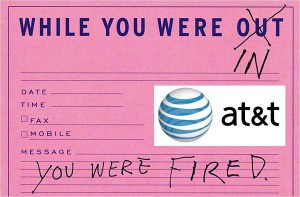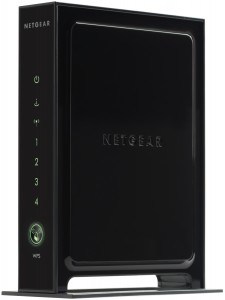 As we approach the 10th anniversary of 9/11, emergency responders promised a state-of-the-art emergency communications voice, broadband, and mobile network are still waiting, even though billions in taxpayer dollars have been thrown away in crony insider deals, incompetence, and faulty design work.
As we approach the 10th anniversary of 9/11, emergency responders promised a state-of-the-art emergency communications voice, broadband, and mobile network are still waiting, even though billions in taxpayer dollars have been thrown away in crony insider deals, incompetence, and faulty design work.
Findings from the original 9/11 Commission found radios that couldn’t receive public safety signals, an inability for different fire, police, and ambulance agencies to easily communicate with each other, communications failures when the Twin Towers fell, and nightmarish congestion on civilian cell phone networks often used as a backup when radios are overwhelmed with traffic.
After hundreds of public safety personnel died, the Commission recommended federal funding of a national communications network for emergency responders and other priority traffic. That recommendation has never been implemented, and piecemeal funding of individual projects in its place on the state level have achieved only mixed success.
Now, legislation languishing to Washington to pay for a national emergency network is getting a renewed push from Democratic senators Jay Rockefeller of West Virginia and Kirsten Gillibrand of New York, and Rep. Peter King, a New York Republican.
The estimated cost of the new network is between $10-12 billion dollars, but before taxpayers foot the bill for a new voice/data emergency network, federal officials should learn from past mistakes that have wasted billions of dollars and have been delayed or worse by waste, fraud, and abusively bad planning.
Examples from just one state — the one worst impacted by the events on 9/11, provide numerous examples of bad decisionmaking and repeated mistakes that could cost taxpayers even more.
The New York Statewide Wireless Network – A Disaster Of Its Own Making
In the summer of 2004, New York State accepted bids to construct what it thought would be a $500 million-$1 billion dollar statewide wireless radio and data system to connect emergency responders together anywhere from Buffalo to Long Island. The $1 billion dollar winning bid came from Tyco Electronics’ MA/COM division, which claimed it could do the job for one-third of the cost of the next qualified bidder Motorola, which put the price tag closer to $3 billion.
 The wide disparity in bids created significant controversy, especially for Motorola which has years of experience in constructing emergency radio systems.
The wide disparity in bids created significant controversy, especially for Motorola which has years of experience in constructing emergency radio systems.
“There’s something wrong with this picture,” John McFadden, Motorola’s vice president of sales for the northern division of its North America Group told Urgent Communications magazine. “There shouldn’t be a massive gap in these prices.”
Indeed, M/A-COM and Motorola — the first vendors to deploy Project 25-compliant systems — often find themselves as bidding competitors, but their proposals typically are in the same price range, Motorola spokeswoman Pat Sturmon told the magazine.
“If we had lost by 10% or 15%, we would have packed our bags and moved on,” she said.
Then-state assemblyman David Koon (D-Fairport), also raised his eyebrows over the veracity of MA/COM’s bid. He called MA/COM a “kind of unproven company” for its track record of successfully completing projects on time and on budget. Koon said Pennsylvania’s wireless system, also being built by MA/COM, ran significantly over budget and was running late.
Four years later, MA/COM’s reputation took a hit when Lancaster County canceled their contract with the company for inadequate reception of fire ground communications. By 2009, Pennsylvania’s statewide network was still suffering reception problems and remained incomplete, costing state taxpayers $500 million, when it was originally expected to cost $179 million. Despite this, state officials involved in the original approval of MA/COM defended the company’s performance in the state, blaming mountainous terrain for reception issues and changes in the scope of the network.
In 2007, many of Koon’s fears about MA/COM’s eventual performance in New York were proven correct as costs for the billion dollar network more than doubled, and its construction ran considerably behind schedule. In late 2007, a field test of MA/COM’s network in Erie County was called an abject failure.
Syracuse’s Post-Standard delivered the report card:
Buffalo’s fire commissioner said many radios had no reception in the western half of the city. And many radios that did get signals had poor sound quality. Problems surfaced, too, that pointed out the need for more effective training of the folks operating the network’s equipment.
[…] The Erie-Chautauqua leg of the network was supposed to be up and running by last June. It was on track to meet that target as late as December 2006, according to the state comptroller. Now, the state is hoping to see it working by April 2008.
 It was not to be. Citing 10 pages of the deficiencies that M/A-COM did not fix or remedy, then Gov. David Paterson canceled the contract in January 2009, and effectively sidelined the network. In fact, state officials were seeking a refund of at least $50 million in wasted taxpayer dollars.
It was not to be. Citing 10 pages of the deficiencies that M/A-COM did not fix or remedy, then Gov. David Paterson canceled the contract in January 2009, and effectively sidelined the network. In fact, state officials were seeking a refund of at least $50 million in wasted taxpayer dollars.
While New York and Pennsylvania were struggling with performance issues in rolling out MA/COM’s networks, MA/COM employees were testifying before the FCC, advocating the federal government adopt the kind of “end-to-end IP network” similar to what the company was building for New York.
But the controversies don’t stop there. Several contractors hired to develop, administer, or deploy various projects have come under fire for their performance on various projects:
Hiding Projects from Public Scrutiny

Harry Bronson, Monroe County's former Democratic Minority Leader is among many asking questions about Monroe County's public safety communications project.
In December 2010, New York’s comptroller rejected a $118 million contract to update New York City Transit’s communications system, citing the association of the engineering company involved in an alleged $80 million corruption scheme involving city payroll processing. The government officials who supported the bid were under suspicion of ignoring the consultant fraud and money laundering alleged by federal prosecutors, perhaps to protect their own reputations. Details of the project under scrutiny were carefully controlled and selectively released by the Office of Payroll Administration, the body in charge of the “problematic project.” The executive director was suspended. He later resigned and as of June of this year, New York Mayor Michael R. Bloomberg was demanding a refund of $600 million — all the money one of the project entities has been paid for the project under scrutiny since 2003.
In Monroe County, N.Y. county officials are under increasing state scrutiny over a project to convert the county’s fire radio system to a digital platform. Questions have been raised about the establishment of a local development corporation — Monroe Security and Safety Systems, Inc. (M3SI) and a contractor — Navitech, which some believe are being used to avoid state oversight requirements. The Center for Government Research suggested the cozy relationship between the county and the contractors might not be above-board:
[…] Navitech sought bids from only two vendors, Motorola and Harris RF Communications. After Navitech awarded a $30 million contract to Harris, Motorola cried foul, asserting that the bid lacked specific requirements and that the bid was uncompetitive in other ways.
Press and blog reports of the transaction suggest that personal ties among the County Administration and Navitech are involved. Whether allegations of “self-dealing” are true or not, by delegating the big money transaction to Navitech, M3SI appears to have violated the spirit of openness and transparency suggested by open meetings laws and the public bidding process. We accept the proposition that a private firm can operate more efficiently than a public entity. Perhaps complying with all of those laws would have resulted in higher cost. But that seems unlikely. Properly managed, a public bidding process that employs clear specifications and seeks bids from all comers will squeeze excess profit from prospective vendors, securing a better deal for the taxpayer. There is more to learn about how this bidding process was managed. But what we appear to know about the circumstances leaves open the possibility of self-dealing and corruption.
Communications System Upgrades Some Local Fire Officials Think Are Worse Than What They Have Now

Naples, N.Y. Fire Chief Pat Elwell doesn't want Ontario County to spend money on a digital radio upgrade.
In Ontario County, N.Y., some public safety officials understand the need for upgrades, especially a decade after 9/11, but the systems being promoted by some vendors who dazzle local and state officials with glossy presentations and help with federal and state aid don’t get the same glowing assessments by individual fire and police agencies that are forced to use them. As the hilly Finger Lakes county contemplates a digital upgrade to its public safety networks, Naples Fire Chief Patrick Elwell said the new system could endanger firefighters, not help them.
“There have been numerous failures of the digital trunk communication system, which have contributed to the death of firefighters,” said Elwell.
Although digital systems open up more individual channels for police and fire agencies to communicate, the audio quality often leaves much to be desired. Almost all sound worse than the average cell phone, with audio artifacts that can give a “watery” quality to voices. Background noise, common at a fire scene, can actually be amplified by some digital systems, although “hiss and static” common to weak analog signals is eliminated. Unfortunately, according to Elwell, digital communications systems do occasionally crash, which can disrupt all radio communications county-wide.
The Messenger Post newspaper elaborates:
Elwell provided supervisors with a packet of information included documented cases of radio failure that resulted in the death of firefighters. One took place on April 16, 2007, when a Woodbridge, Va., firefighter died in the line of duty. The Prince William County Department of Fire Rescue concluded that the county’s Motorola Digital Trunked radio system contributed to the tragedy. In another case, firefighters were using their cell phones to communicate when the digital system failed.
Elwell suggested the county reconsider its investment in the digital system and maintain the 400 MHz radio system.
“The financial burden will be less, and the 400 MHz system will assure clear communication on fire ground,” he said.
“Secure” Communications Network Easily Eavesdropped and Subject to Effective Jamming With $30 Children’s Toy
Among the most ubiquitous modern digital communications networks public safety agencies rely on is based on a standard called Project 25 (P25). Many manufacturers can build equipment that can support this standard, which makes competition among different vendors possible. P25 networks are increasingly common in cities around the country for law enforcement and fire communications. But recent revelations suggest P25, touted as secure and effective in public emergencies, isn’t as robust as its backers would have you believe. In fact, new findings suggest eavesdropping on secure transmissions is easier than many thought, and anyone using a $30 children’s toy can effectively jam even the most sensitive law enforcement communications.
Scanner enthusiasts and the media have legally monitored public safety communications for decades, listening to fire and police calls and causing no harm. But some agencies don’t appreciate the public audience, and have used digital radio systems to make listening more expensive (digital scanners cost hundreds of dollars) or encrypt even the most routine communications.
The Wall Street Journal reports findings from the University of Pennsylvania that suggest eavesdropping is still routine, even for encrypted, sensitive communications.
University of Pennsylvania researchers overheard conversations that included descriptions of undercover agents and confidential informants, plans for forthcoming arrests and information on the technology used in surveillance operations.
“We monitored sensitive transmissions about operations by agents in every Federal law enforcement agency in the Department of Justice and the Department of Homeland Security,” wrote the researchers, who were led by computer science professor Matt Blaze and plan to reveal their findings Wednesday in a paper at the Usenix Security Symposium in San Francisco.
More disturbing is the fact P25 transmissions can be effectively jammed over a considerable distance with the use of a modified $30 children’s toy — the GirlTech IM-Me:
The GirlTech-based reflexive subframe jammer is able to reliably prevent reception from a nearby Motorola P25 transmitter as received by both a Motorola XTS2500 transceiver and Icom PCR-2500, with the jammer and the transmitter under attack both operating at similar power levels and with similar distance from the receiver. A standard off-the-shelf external RF amplifier would be all that is necessary to extend this experimental apparatus to real-world, long-range use. While we did not perform high power or long-range jamming ourselves (and there are significant regulatory barriers to such experiments), we expect that an attacker would face few technical difficulties scaling a jammer within the signal range of a typical metropolitan area.


 Subscribe
Subscribe














